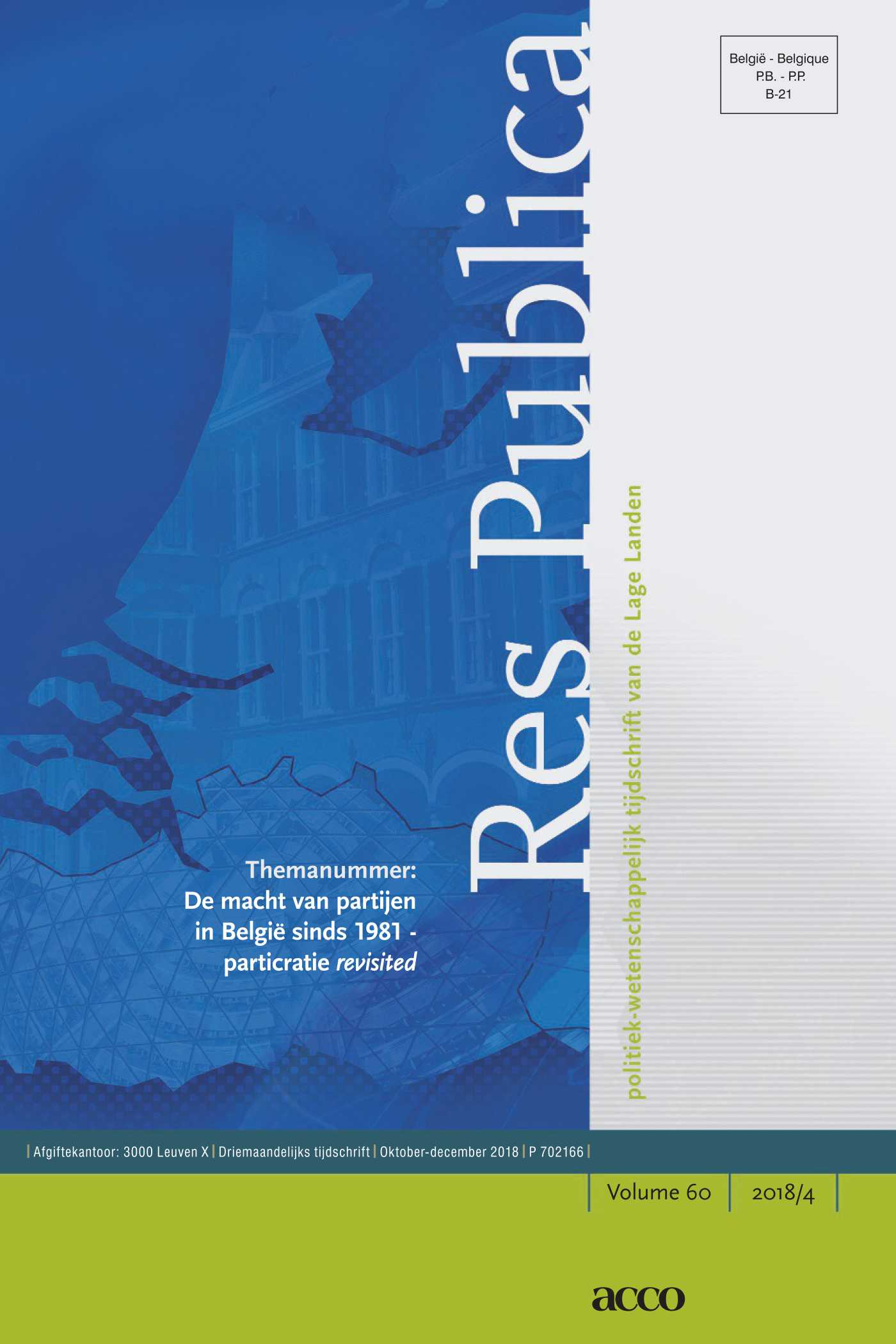|
Electoral institutions shape the incentive that elected representatives have to cultivate a personal vote, a geographically-concentrated personal vote in particular. But are electoral institutions able to make representatives do what they would not do otherwise and to make them not do what they otherwise would have done? Using data from the cross-national PARTIREP MP Survey, it is demonstrated that electoral institutions shape elected representatives’ local orientation. Local orientation decreases as district magnitude grows – regardless of what representatives think about political representation. But representatives’ conceptions of representation do shape their uptake in the legislative arena from their contacts with individual constituents. The effect of the electoral incentive grows stronger as elected representatives think of representation as a bottom-up rather than a top-down process. |


Res Publica
About this journalSubscribe to the email alerts for this journal here to receive notifications when a new issue is at your disposal.
| Article |
|
| Keywords | electoral systems, constituency representation, Belgium and the Netherlands |
| Authors | Audrey André and Sam Depauw |
| AbstractAuthor's information |
| Article |
|
| Keywords | candidate selection, representation, Belgium |
| Authors | Gert-Jan Put and Bart Maddens |
| AbstractAuthor's information |
|
In a closed or semi-open PR-system, the designation of the MPs is primarily determined by their position on the list. In this paper, we attempt to find out on the basis of which criteria a party selects the candidates who are most likely to be elected, due to their high and/or visible position on the list. We do so by comparing these realistic candidates with the candidates on unrealistic positions on the list. A multi-level logistic regression analysis of the Flemish candidates in four subsequent federal elections in Belgium shows that the selectorates have a marked preference for incumbents and for mayors. Aldermen also stand a better chance of being elected, but only if they are from a larger communality. Women are strongly underrepresented amongst the realistic candidates, but this is only due to the fact that there are relatively few women mayors and incumbents. |
| Article |
|
| Keywords | group representation, members of parliament, Low Countries, class, gender, ethnicity |
| Authors | Karen Celis and Bram Wauters |
| AbstractAuthor's information |
|
This article investigates whether group-based politics is still relevant in Belgian and Dutch politics. Based on the PARTIREP MP Survey it more precisely studies the extent to which Belgian and Dutch parliamentarians in comparison to other European countries attach importance to the representation of ‘old’ cleavage groups (class and religious groups) or new groups (age groups, women and ethnic minorities), and which strategies are considered most appropriate. Group representation of old and new groups is found to be of great importance in both countries. Class is not dead and age groups are also highly represented. In contrast, religious groups and ethnic minorities receive far less attention in the Low Countries. Notwithstanding these similarities, there is also cross-country variation regarding the level of importance (greater in the Netherlands), the represented groups and the strategies for representation. |
| Article |
|
| Keywords | generational replacement, age-period-cohort-analysis, composition effects, cognitive mobilization, the Netherlands, cleavage voting |
| Authors | Ruth Dassonneville |
| AbstractAuthor's information |
|
Electoral behavior has changed considerably over the last few decades. The Netherlands are exemplary of how the cleavage structure has waned and how this has led to a weakening of the bonds between parties and voters and to higher levels of electoral volatility. Christian democratic and social democratic parties are most affected by these changes, because of their strong roots in the cleavage structure. The alterations in electoral behavior are generally assumed to be evolving gradually through a process of generational replacement. Composition effects on the one hand and a weakening of the impact of socio-structural factors, partly caused by cognitive mobilization on the other hand are considered to be the mechanisms behind this generational change. This paper tests these assumptions with regard to the Netherlands on the basis of the Dutch Parliamentary Election Surveys, 1971-2010. The findings indicate that while some variation between different birth cohorts is visible, most of the differences in voting for both of these parties, however, are situated at the level of election years. Furthermore, with regard to what drives change over time, the analyses indicate that while composition effects and changes in the effects of socio-structural variables are of some importance, cognitive mobilization is not causing the change observed. |
| Essay |
|
| Authors | Rudy B. Andeweg |
| Author's information |
| Symposium |
|
| Authors | Kris Deschouwer, Didier Caluwaerts, Henk van der Kolk e.a. |
| Author's information |
| Research Note |
|
| Authors | Arnaut Geeraert, Jeroen Scheerder and Hans Bruyninckx |
| Author's information |
| Research Note |
|
| Authors | Ingrid van Biezen, Peter Mair and Thomas Poguntke |
| Author's information |
| Research Note |
|
| Authors | Brian Burgoon, Panicos Demetriadis and Geoffrey Underhill |
| Author's information |

 Issue 4
Issue 4